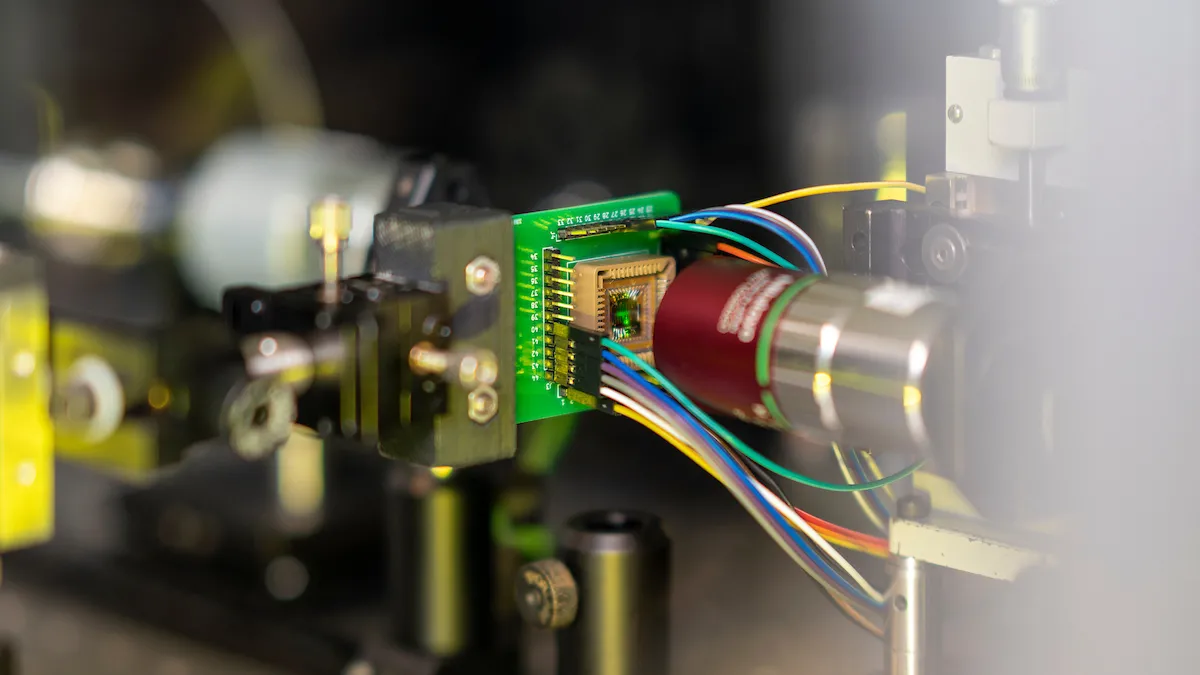New tech could create cheaper and thinner flat screens

Researchers have developed new technology that could usher in the “next-generation” of thinner, higher-resolution and more energy efficient screens and electronic devices.
The international team from Nottingham Trent University in the United Kingdom, The Australian National University (ANU) and UNSW Canberra has created nanoparticles called “metasurfaces” that perform better than current displays like LCDs and LEDs.
LCDs and LEDs rely on liquid crystal cells to create a display on TVs and other screens.
The research team’s metasurfaces are 100 times thinner than liquid crystal cells, offer a tenfold greater resolution and consume 50 per cent less energy.
The researchers believe their technology is compatible with modern electronic displays.
“We have paved the way to break a technology barrier by replacing the liquid crystal layer in current displays with a metasurface, enabling us to make affordable flat screens liquid crystal-free,” lead researcher Mohsen Rahmani, Professor of Engineering at Nottingham Trent University, said.
“The most important metrics of flat panel displays are pixel size and resolution, weight and power consumption. We have addressed each of these with our meta-display concept.
“Most importantly, our new technology can lead to a huge reduction of energy consumption – this is excellent news given the number of monitors and TV sets being used in households and businesses every single day. We believe it is time for LCD and LED displays to be phased out in the same way as former cathode ray tube (CRT) TVs over the past ten to 20 years.”
Dragomir Neshev, Director of the ARC Centre for Excellence in Transformative Meta-Optical Systems (TMOS) and ANU Professor in Physics, said: “The capability of conventional displays has reached its peak and is unlikely to significantly improve in the future due to multiple limitations.

“Today there is a quest for fully solid-state flat display technology with a high-resolution and fast refresh rate. We have designed and developed metasurface pixels that can be ideal for the next-generation display.
“Unlike liquid crystals, our pixels do not require polarised lights for functioning, which will halve screens’ energy consumption.”
Khosro Zangeneh Kamali, a PhD scholar at ANU and the first author of the study, said: “Metasurfaces are proven to exhibit extraordinary optical behaviour.
“However, inventing an effective way to control them is still a subject of heavy research. We have proposed electrically programmable silicon metasurfaces, which is a versatile platform for programmable metasurfaces.”
Dr Lei Xu, a team member from Nottingham Trent University, said: “There is significant room for further improvements by employing artificial intelligence and machine learning techniques to design and realise even smaller, thinner and more efficient metasurface displays.”
Professor Andrey Miroshnichenko, a team member from UNSW Canberra, said: “Our pixels are made of silicon, which offers a long lifespan in contrast with organic materials required for other existing alternatives. Moreover, silicon is widely available, CMOS compatible with mature technology, and cheap to produce.”
Professor Miroshnichenko said the team hoped their development could generate a frontier technology in new flat displays with a global market value of about $117 billion in 2020.
The work is reported in the journal Light: Science & Applications.



